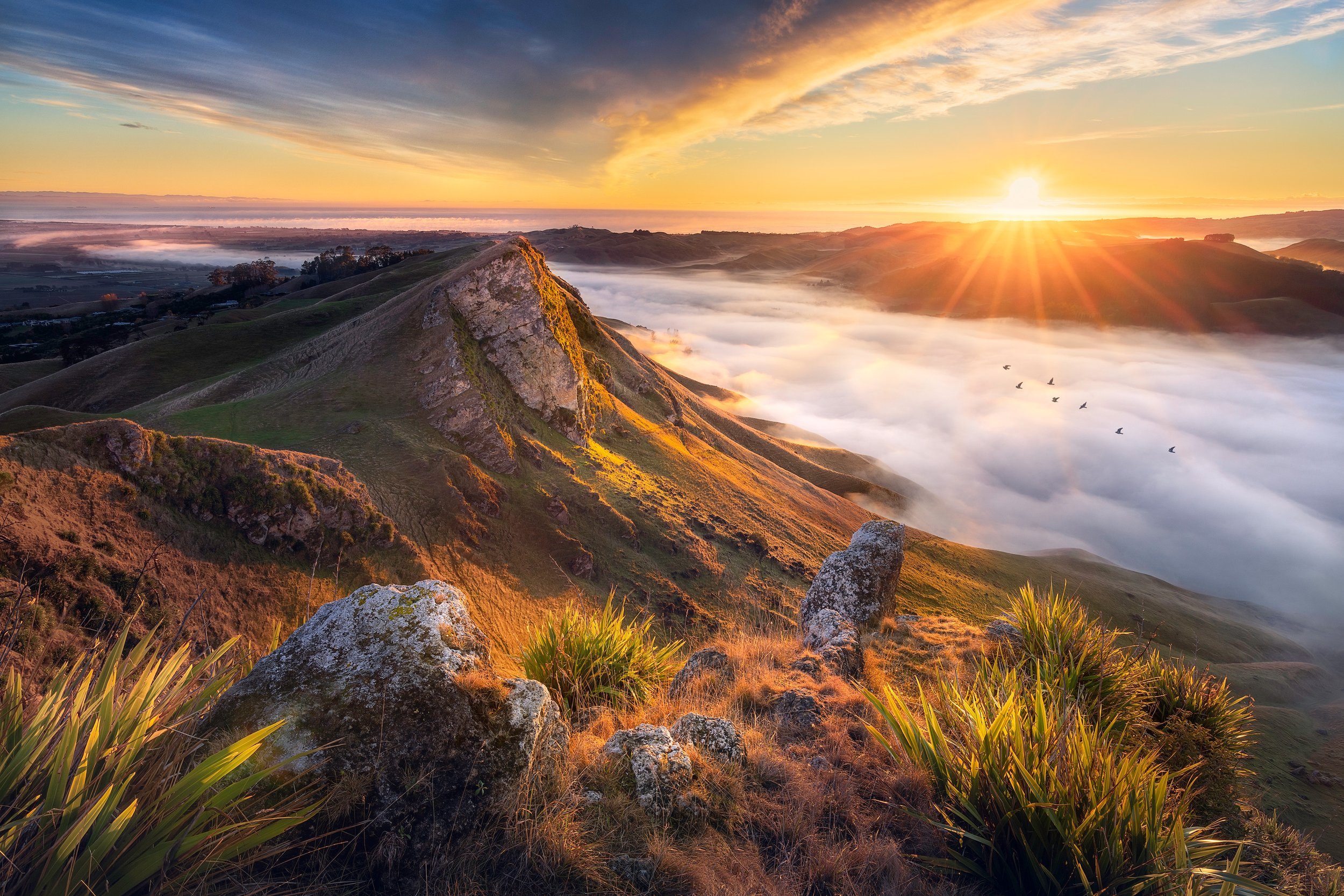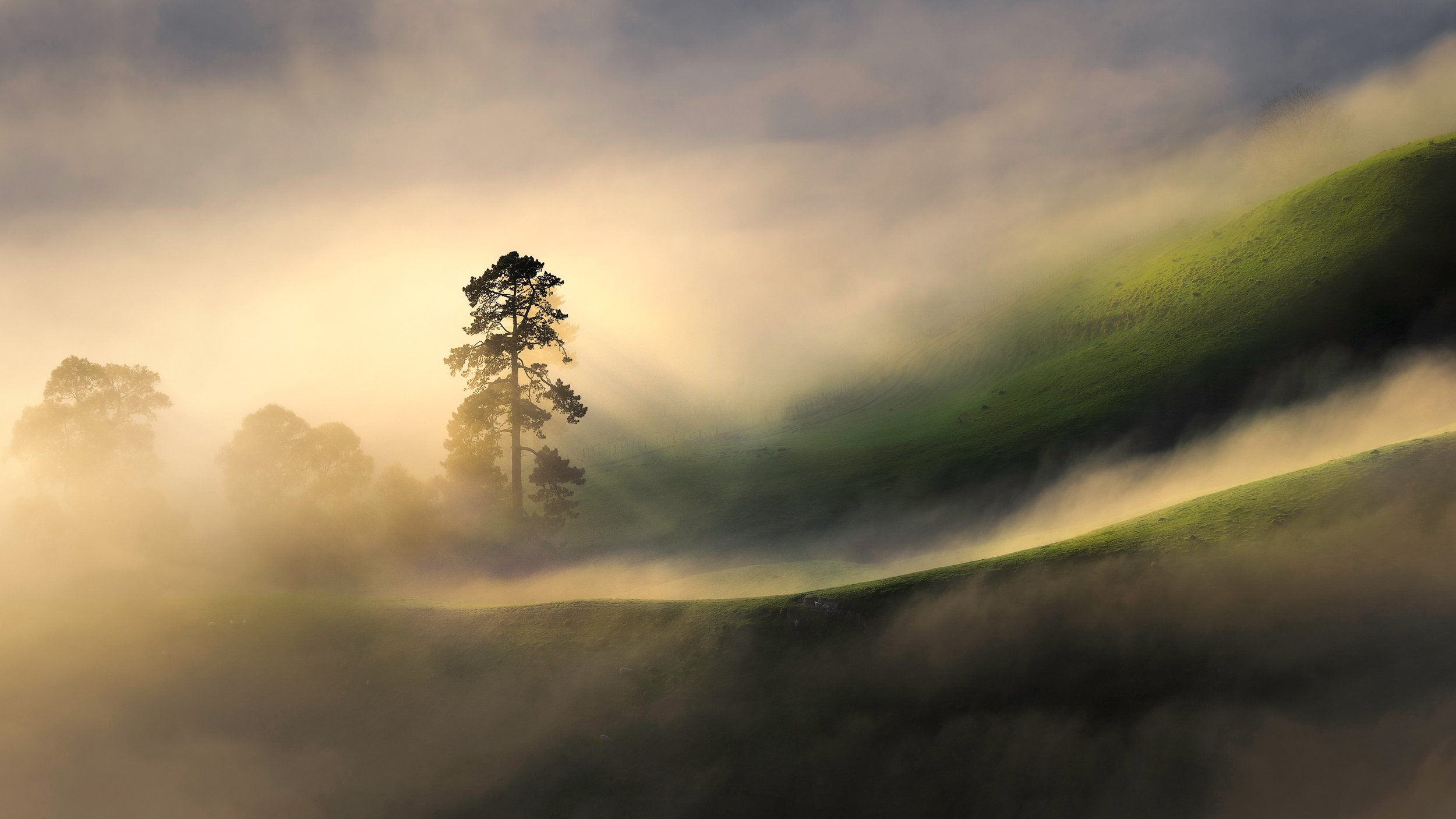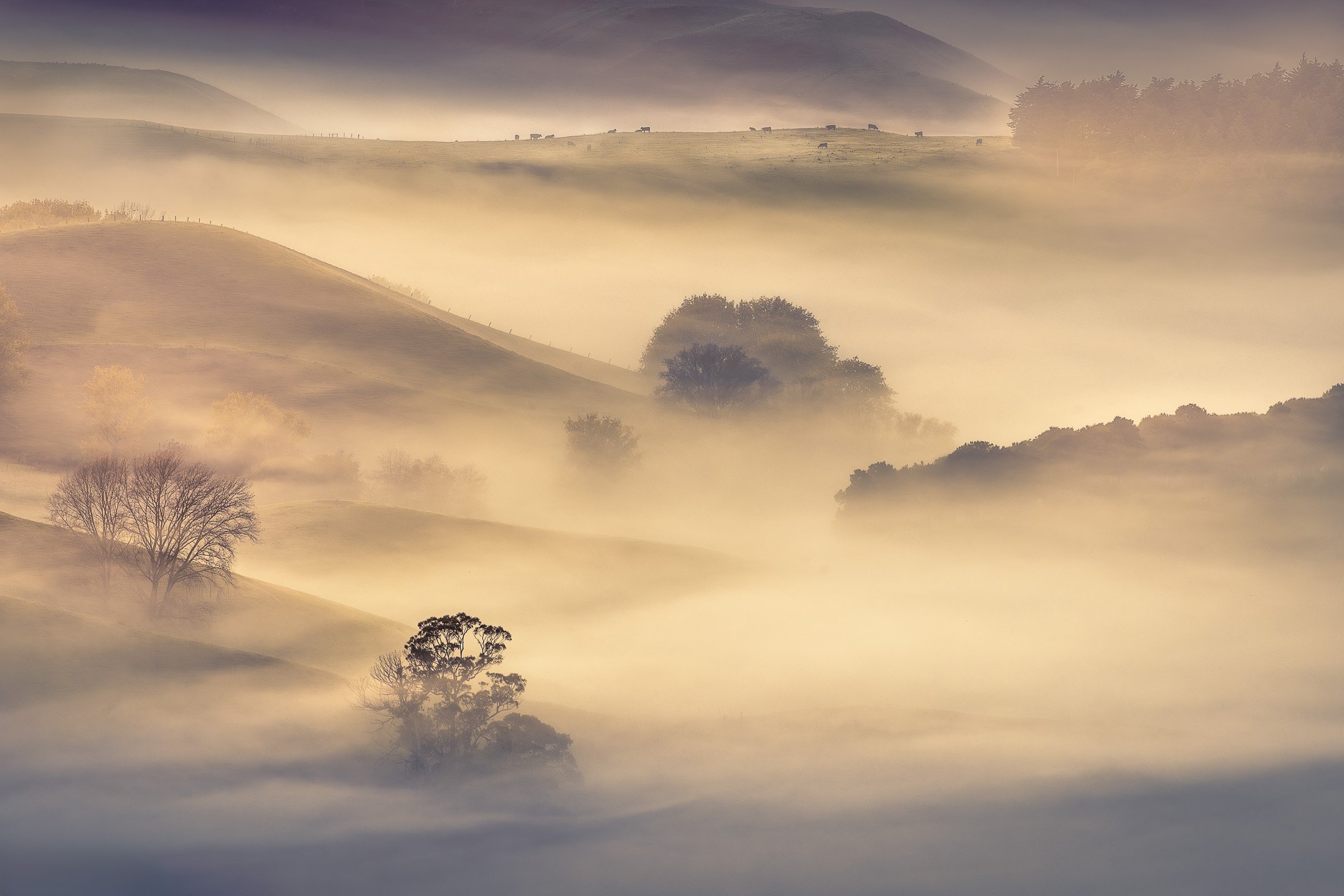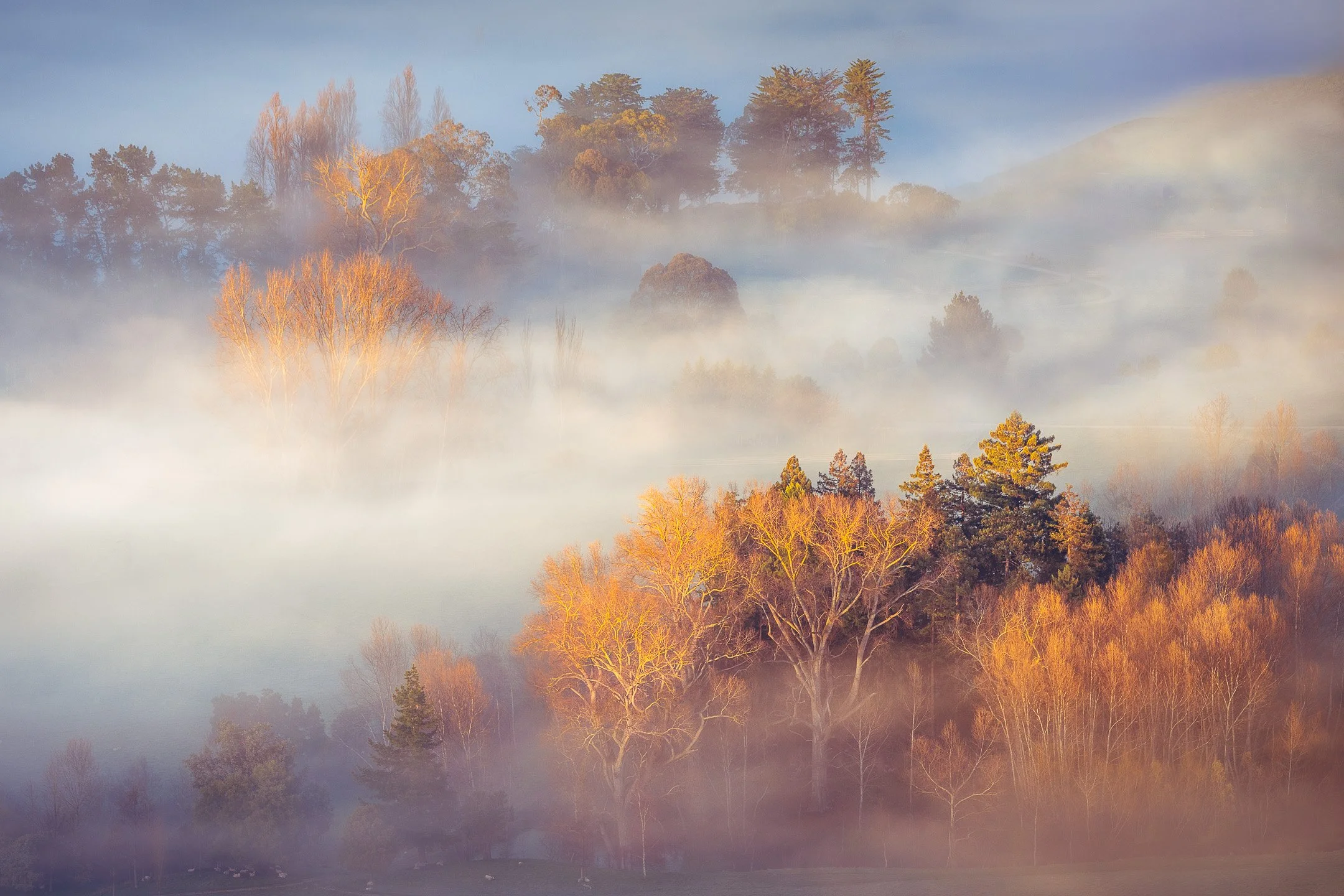From Scenic to Expressive
This article was first published in Nature Vision Magazine, Issue 10 (Fall 2025).
When I first picked up a camera, my eyes were drawn to the scenic. I wanted to capture the big views: mountains, coastlines, and the iconic places that told people exactly where they were. Scenic landscapes gave me a sense of connection — to the land, to the people who recognised it, and to the long tradition of landscape photography that celebrates place.
There is a powerful satisfaction in standing before a grand vista and framing it in a way that does justice to the moment. These images were popular with friends, with local audiences, and later with print buyers. They gave me a sense of achievement and belonging. But over time, I began to notice a quiet voice in the background — a sense that while my photographs were appreciated, they didn’t always reflect the full depth of what I felt in those places.
Light up the Peak - Te Mata Peak, Hawke's Bay, New Zealand
The Pull of the Scenic
Scenic photography is rewarding for good reason. Not only does it serve as a record of where you’ve been, it connects directly with the viewer’s memory and recognition: “I’ve been there”, or “I’d love to go there.” For me, living in New Zealand, those landscapes were often dramatic and instantly identifiable — mountains catching first light, a coastline swept by surf, or a valley bathed in evening glow.
These images carried their own kind of truth. They were honest documents of place, a way of saying “this is what it looks like.” They resonated with people because they made the distant familiar and the familiar beautiful. And for a long time, I found purpose in creating them.
Pyramids of Lindis – Snow-dusted peaks glowing above tussock grass
The Seeds of Change
I’m fortunate to live in one of the most visually striking parts of New Zealand — the Hawke’s Bay region, with the majestic Te Mata Peak practically on my doorstep. It’s a dream location for a landscape photographer. The Peak offers a grand view that’s endlessly captivating, and with the right light or the change of seasons, it reveals new moods and character each time.
But the longer I photographed it, the more I realised that what truly captivated me wasn’t always the grand view. I would find myself entranced by the movement of fog drifting across a hillside, or by the rhythm of tree trunks dissolving into mist. These weren’t scenes that shouted their location or screamed “postcard” or “social media views.” They were quieter, more personal, more elusive.
At first, I didn’t quite know what to do with these images. They didn’t fit the mould of what people expected from “landscape photography,” and I wasn’t sure they would find an audience. But I couldn’t ignore the pull. Over time, I realised that I was no longer content with simply documenting the landscape. I wanted to express the way it felt.
Golden Mist in the Tukituki Valley in Hawke's Bay, New Zealand
From Documentation to Expression
That desire marked the beginning of a gradual shift — from scenic to expressive work, a transition not without its challenges. Scenic images gave me confidence and external validation — they were understood, appreciated, and purchased. Expressive work was different. It asked me to let go of the safety of recognisability and lean into atmosphere, abstraction, and ambiguity.
In mist, I found a way to conceal and reveal at the same time. In reflections, I discovered symmetry and design that spoke to my fascination with order. These images weren’t about places so much as about experiences: the stillness of a foggy morning, the hush of a forest, the way light transforms water into something otherworldly.
I began to see that landscape photography could be less about what is out there and more about what is in here — inside me. That realisation opened a door to insights that, in time, became a way of aligning my images with my own inner responses to nature.
Illuminated - A pine tree silhouetted against glowing fog
Living Between Two Worlds
Of course, the tension didn’t disappear. Part of me still loved the sweep of a mountain range at sunrise or the drama of a coastline in storm light. These images remain part of my identity as a photographer, and they connect strongly with local audiences and print buyers who want to bring those recognisable places into their homes.
But the expressive work, while often less commercially obvious, felt more authentic. It was as if these images were the result of my really understanding the landscape and what attracted me to it. That shift was both liberating and unsettling. Would people understand this work? Could I sustain a practice that embraced both personal and popular images?
I also discovered that expressive images live differently in the world. Scenic photographs thrive in the quick, like-and-swipe rhythm of social media, where impact must be instant. Expressive work asks for more: time, attention, and openness. To give it the space it needed, I began producing stories and collections alongside the images — ways of slowing the viewer down, inviting them to engage more deeply.
These questions and discoveries became part of the journey. And in time, I realised that I didn’t have to choose one world over the other. Scenic and expressive photography could coexist, each fulfilling a different role — one connecting to place, the other connecting to feeling.
Rainbow at the Archway Islands, Wharariki Beach, New Zealand
Lessons From the Transition
Looking back, the move from scenic to expressive has taught me a few things:
Photography evolves as we do. The images I made early in my journey weren’t wrong or lesser — they were exactly what I needed at that stage. Growth meant allowing myself to change.
Expression requires vulnerability. Scenic images are often immediately accessible. Expressive ones can be more ambiguous. Sharing them means accepting that not everyone will “get it” — and that’s okay.
Both approaches have value. Scenic work connects people to recognisable landscapes, while expressive work reveals something more personal. Together, they enrich both the photographer and the audience.
Atmosphere speaks. Fog, mist, light, and shadow became not just features of the land but tools for expressing mood and perception.
Display shapes perception. Scenic images thrive on instant impact, while expressive ones need slower spaces. Stories and collections help viewers linger.
The Land’s Quiet Dreaming – Layers of gentle hills blanketed in soft, golden mist
Closing Reflection
Every photographer walks a path between documentation and expression. For some, the joy lies in capturing a scene exactly as it is, preserving its reality. For others, it lies in shaping the image to reflect something internal — a mood, a memory, a state of mind. Most of us, I suspect, fall somewhere in between, moving back and forth as our needs and inspirations change.
My journey from scenic to expressive landscape photography has been less about leaving one behind than about widening the circle to include both. The iconic view still matters — but so does the quiet tree in the mist, the ripple breaking a reflection, the fleeting veil of fog.
In the end, landscape photography is not only about where we point the camera. It is also about where we are in our own creative journey. Scenic or expressive, recognisable or abstract, each image is a step along that path. And perhaps the most important thing is not which step we are on, but that we keep walking – and seeing.
Golden Crowns in Fog — Golden light and drifting fog turn the familiar into a dreamlike vision.
This article was first published in Nature Vision Magazine, Issue 10 (Fall 2025).
Share this article
If you would like more of these visual stories, then scroll to the bottom and subscribe to my newsletter.










A visual story of a photography trip to Cape Farewell including a sunrise and sunset at Wharariki Beach, a hike on top of the cliffs, and an exploration of Farewell Spit.